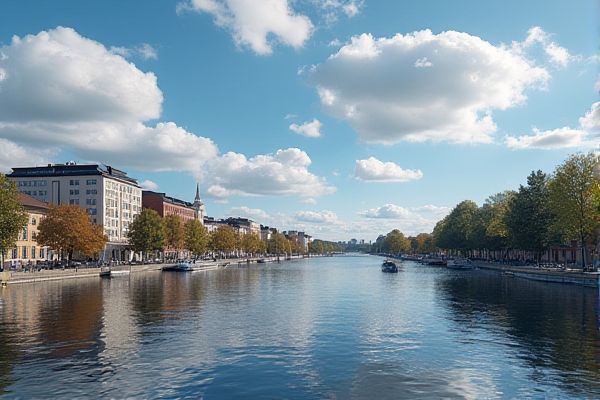
Utilities setup and providers in Finland: Register residency before utility setup. Electricity from several competitive providers. District heating common in urban areas. Water supplied by municipal services. Internet and mobile from various providers. Compare prices through online platforms. No natural gas for households typically. Waste management organized municipally. Renewable energy options available. Direct debit for automatic payments.
Register residency before utility setup.
Before setting up utilities in Finland, it is essential to register your right of residence, especially if you are staying longer than three months, with the Finnish Immigration Service or through the Enter Finland system. For non-EU citizens, registering with the Digital and Population Data Services Agency is required after obtaining a residence permit.
Electricity from several competitive providers.
In Finland, consumers have the advantage of selecting from over 50 competitive electricity providers, including major companies such as Fortum, Helen, and Vattenfall, alongside newer entrants like Oomi, each of which offers various electricity contracts and pricing models. The responsibility for distribution lies with the local electricity network company. To explore and compare different options available, you can visit Electricity Companies for more detailed information.
District heating common in urban areas.
District Heating is highly prevalent in urban areas of Finland, covering virtually the entire economically connectable area. With a network of about 16,000 km of insulated pipes, it efficiently distributes hot water from centralized production plants to buildings. This form of heating is renowned for being the most popular choice in large cities. To learn more about the energy networks in Finland, including the extensive district heating systems, visit the official Energy Sector in Finland website.
Water supplied by municipal services.
In Finland, Water Services are primarily provided by public water and sewerage utilities owned by municipalities. These utilities are often organized as municipal enterprises or companies, with some regions, like the Helsinki metropolitan area, managed by larger entities such as the Helsinki Region Environmental Services Authority.
Internet and mobile from various providers.
In Finland, the main mobile and internet providers are Elisa, DNA, and Telia, each offering various plans with 4G and 5G coverage, different pricing, and additional features such as unlimited calls, texts, and data. These operators also provide prepaid SIM cards and eSIM options, with Telia known for maximum coverage and affordability, Elisa for flexibility, and DNA for speed and innovative services.
Compare prices through online platforms.
Finding the right electricity contract in Finland just got a lot easier with a comprehensive comparison tool available at Shksopimukset. This website allows you to compare various electricity contracts, including fixed-price, spot price, and hybrid contracts. By considering your current energy consumption and contract terms, it helps you find the cheapest option tailored to your needs, all with a simple and free comparison tool.
No natural gas for households typically.
In Finland, households typically do not use natural gas, and instead rely on electricity companies such as Fortum, Oomi, Nordic Green Energy, and others that focus on electricity production from sources like hydro, wind, and solar power. These companies ensure a reliable and environmentally friendly energy supply, promoting sustainable practices across the region. For a comprehensive list of providers and more information on their services, visit the Trusted Electricity Companies website to explore the best options available for Finnish households.
Waste management organized municipally.
In Finland, municipal waste management is primarily organized through municipal enterprises, associations of municipalities, and joint purchasing agreements, with 25 municipal enterprises and several associations ensuring that effective waste management strategies are in place. These entities collectively serve about 95% of the population, ensuring that waste management is largely publicly controlled and compliant with the Waste Act and Finnish procurement law. For more information on how municipal waste companies operate and manage these responsibilities, you can visit the Eastcham website.
Renewable energy options available.
In Finland, renewable energy options are predominantly driven by bioenergy, hydroelectric power, and wind energy. By 2021, renewables covered 39% of electricity generation, with major producers including Fortum, Pohjolan Voima, and Vattenfall, and significant contributions from hydropower and wind power, particularly through companies like Hyotytuuli. More insights into Finland's commitment to renewable energy can be explored on Renewable Energy in Finland.
Direct debit for automatic payments.
In Finland, utility companies faced challenges after stopping support for Direct Debit when e-invoice services were introduced, leading some to revert to paper invoicing. Implementing new payment infrastructures with mandates for direct debits is crucial for automating payments and improving user experience and payment conversion rates. For more insights on how this transformation is shaping the industry, visit the Tietoevry Blog which delves into the intricacies of payment systems and their impact on utility companies.
